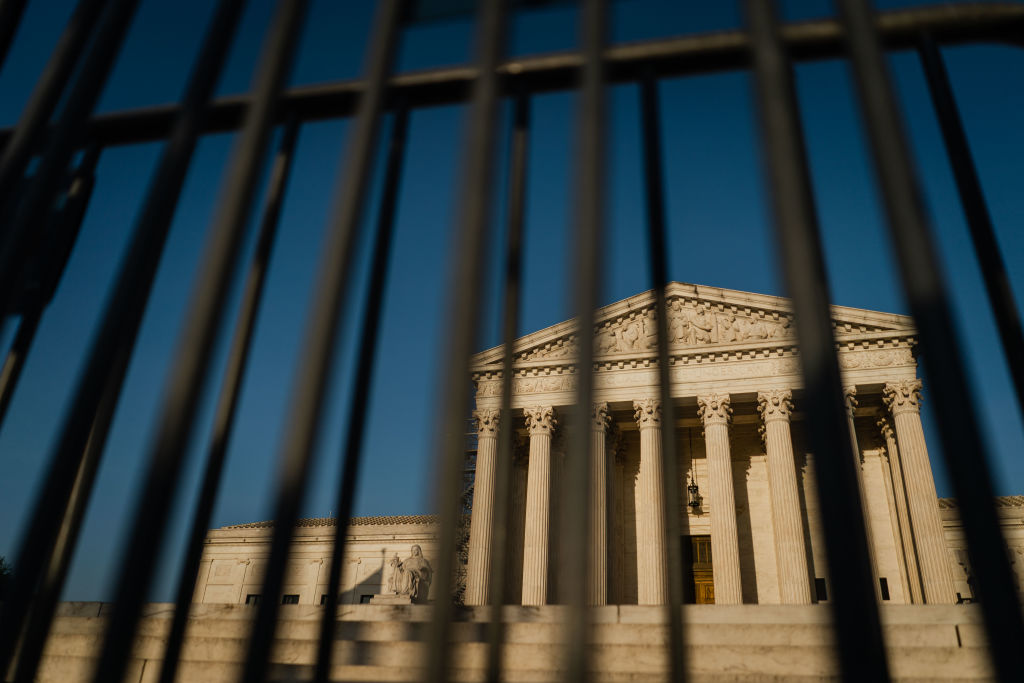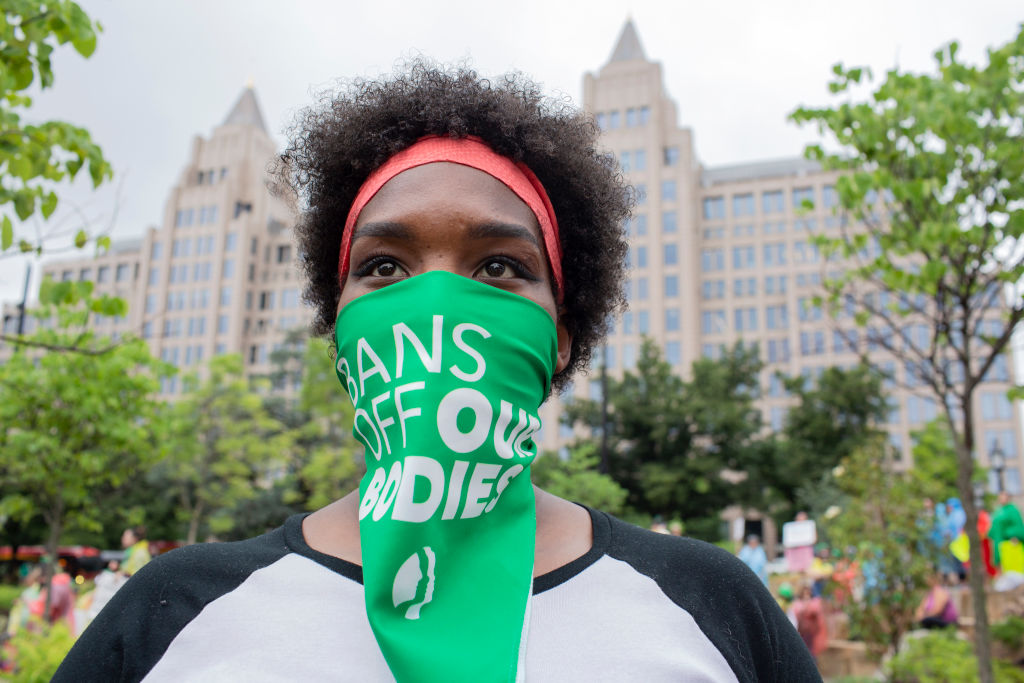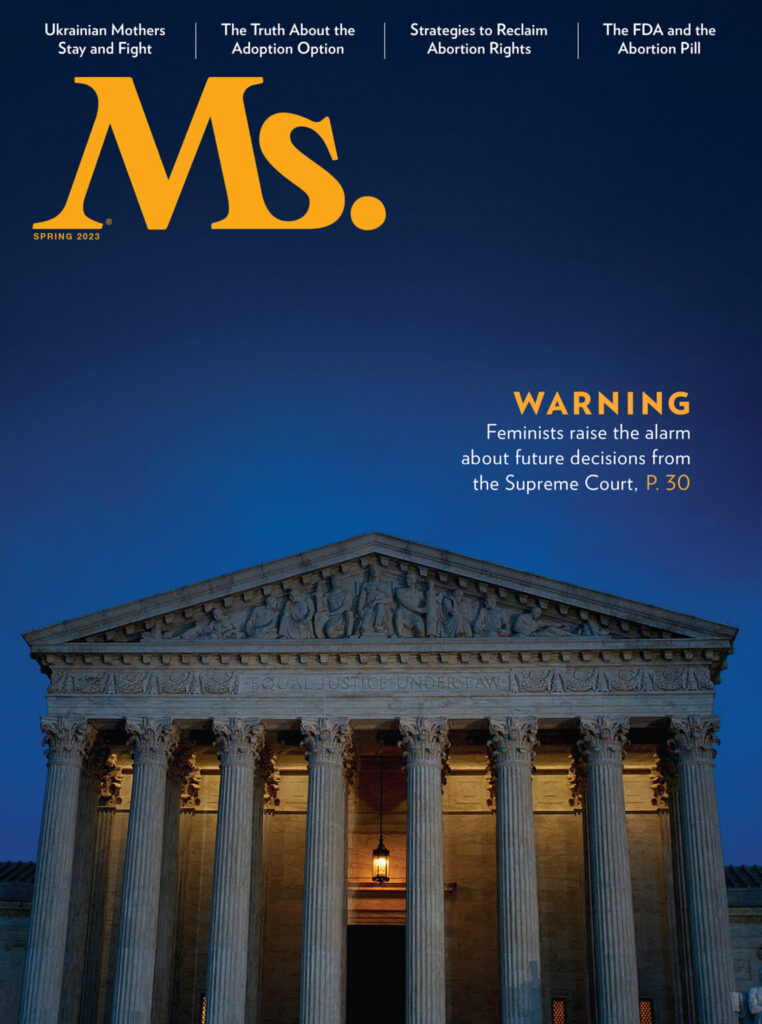
When the Supreme Court issued its ruling in Dobbs v. Jackson Women’s Health Organization overturning the long-standing constitutional right to abortion established in Roe v. Wade, for the first time in its history it took away a fundamental constitutional right.
While most commentary following the decision focused on how the Court ended constitutional privacy protections for abortion, a shocking part of the opinion—and one that received barely a mention—was the Court’s undermining of women’s constitutional equality rights. It’s a clear indication that the Court will allow states broader latitude to pass laws that discriminate against women. This new reality makes final recognition of the Equal Rights Amendment more important than ever.
In a single paragraph buried deep in the opinion, the Court summarily dismissed the idea that denying abortion access violates women’s constitutional equality rights. “A State’s regulation of abortion is not a sex-based classification,” wrote the Dobbs majority, citing a controversial 1974 Supreme Court decision—Geduldig v. Aiello—that many constitutional law scholars believe no longer holds legal weight.
In the Geduldig case, the Court argued that a policy excluding pregnancy from a disability insurance program was not sex discrimination in violation of the 14th Amendment’s equal protection clause because it did not discriminate between men and women, but only between “pregnant and nonpregnant persons.”
Later cases—especially the 1996 opinion in U.S. v. Virginia written by Justice Ruth Bader Ginsburg—expanded constitutional equality for women by striking down laws based on stereotyped ideas about women.
Picking up on this line of reasoning, constitutional law scholars Serena Mayeri, Melissa Murray and Reva Siegel argued in an amicus brief filed in the Dobbs case that Mississippi’s abortion ban relied heavily on “impermissible sex-role stereotypes” and “archaic notions about a woman’s social role.” They argued that Mississippi’s claim that abortion bans protect women assumes “women lack decisional capacity to choose to avoid motherhood” and is “appealing to the traditional sex-role assumption that a woman will suffer if she chooses” not to become a mother.
But the Court ignored those arguments and did not even address U.S. v. Virginia in its opinion.
“A Court that doesn’t feel like abiding by 50 years of precedent, doesn’t need to respect precedents … against sex-based discrimination, and the fact that the Court doesn’t mention it, that is ominous,” said Murray, a New York University law professor. “The Court seems to have no respect for the Constitution beyond what it was in 1868 and 1787.”
The Supreme Court established 14th Amendment equality protections for women in a series of 1970s cases argued by Ginsburg (then a lawyer for the American Civil Liberties Union), culminating in the 1976 decision Craig v. Boren, in which the Supreme Court ruled that states cannot treat men and women differently unless an important government interest is at stake. Applying this heightened level of scrutiny, the Court struck down a wide range of sex-discriminatory laws, including laws that favored men over women in control of marital property, unemployment benefits and many other areas.
Two decades later, the Court expanded this protection in U.S. v. Virginia, ruling that states had to prove an “exceedingly persuasive justification” for discriminatory laws and cannot rely on sex stereotypes to justify these laws.
Constitutional law scholar and Boston University professor Aziza Ahmed worries about the Court backtracking on these important precedents.
“We could see over time an attempt to essentially undermine the idea that sex equality deserves some sort of heightened scrutiny. This could open the door to a lot,” she warned. “It could mean that … states have a lot more latitude to essentially govern and regulate around sex as they want to. This would, of course, have implications beyond just sex in terms of women and men. It would have implications in terms of sexual orientation and marriage.”
The Court seems to have no respect for the Constitution beyond what it was in 1868 and 1787.
Melissa Murray
Rights Not ‘Deeply Rooted’
In Dobbs, not only did the Court cite an outdated case and ignore subsequent law, but it also used legal reasoning that could be deployed by conservative justices to eliminate equal protection clause protections for women altogether and refuse to expand them to LGBTQ people. The majority opinion argued that the 14th Amendment protects only rights explicitly mentioned in the Constitution, those intended to be protected by the framers of the 14th Amendment in 1868, or rights “deeply rooted in the Nation’s history and traditions.”
Using this approach, the Court overruled Roe v. Wade by arguing that the right to abortion met none of these tests: Abortion is not mentioned in the 14th Amendment, the 1868 framers did not intend to protect the right to abortion and such a right is not “deeply rooted in the Nation’s history and traditions.”
This reasoning, if applied to the 14th Amendment equal protection clause itself, could overturn or erode constitutional sex equality law. The amendment does not explicitly mention women or sex. The post-Civil War authors of the amendment were focused on race discrimination, not sex discrimination. And there is clearly not a long history or tradition of sex equality in the U.S. In fact, just the opposite is true: There is a long history and tradition of laws discriminating against women.
The Court in Dobbs justified its finding that there was no history and tradition of abortion rights in the United States by presenting a 30-page list of 19th-century laws prohibiting abortion. One could make an even longer list of past laws enforcing women’s second-class status in American history—such as laws barring women from voting, serving on juries, running for public office, pursuing professions such as law and medicine, securing credit in their own name and more. The traditional law of marriage made wives subservient to their husbands, who were legally allowed to rape and beat them.
The Court’s approach means women cannot count on the 14th Amendment to secure rights they didn’t have in 1868. In their dissent, Justices Stephen Breyer, Sonia Sotomayor and Elena Kagan powerfully summarized the Dobbs decision:
“Those responsible for the original Constitution, including the Fourteenth Amendment, did not perceive women as equals, and did not recognize women’s rights. When the majority says that we must read our foundational charter as viewed at the time of ratification (except that we may also check it against the Dark Ages), it consigns women to second-class citizenship.”
The Dobbs decision also demonstrates a willingness by the Court’s conservative majority to overturn long-standing precedent. This disregard of precedent combined with the Court’s reasoning in Dobbs could be used to undermine women’s long-established sex equality rights.
Breyer, Sotomayor and Kagan concluded:
“Whatever the exact scope of the coming laws, one result of [the Dobbs] decision is certain: the curtailment of women’s rights, and of their status as free and equal citizens.”
In fact, the late Justice Antonin Scalia disputed that the equal protection clause provides any protections for women. “You do not need the Constitution to reflect the wishes of the current society,” he said in an interview in 2011. “The only issue is whether it prohibits [sex discrimination]. It doesn’t. Nobody ever thought that that’s what it meant. Nobody ever voted for that.”
The current majority on the Court could follow Scalia’s reasoning. Dobbs indicates that it may be willing to do so. Six of the nine justices are current or former members of the Federalist Society (as was Scalia), which advocates “originalism,” or looking to the intent of the Constitution’s authors for its meaning.
“There’s no doubt if they are going to be originalist and stick to originalism, then there’s not protection for women under the equal protection clause,” said leading constitutional law scholar and Berkeley Law School Dean Erwin Chemerinsky. “But I don’t know that the Court will see a need to go that far.”
However, Chemerinsky believes the conservative majority on the Court is likely to uphold more laws that negatively impact women’s equality rights, particularly in the context of marriage. For example, Dobbs overruled the 1992 Planned Parenthood v. Casey decision, which struck down a Pennsylvania law requiring wives to notify their husbands in order to obtain an abortion.
“The spousal notification laws could come back in the form of restrictions on travel,” Chemerinsky said. “I worry that states will say that a woman can only get an abortion if she has consent from a spouse or notice from her spouse. I worry what the Supreme Court is going to do on those issues.”
Other constitutional law scholars are concerned that the Court will go further in eroding women’s equality in future decisions.
“After Dobbs, it does seem plausible to me that we are going to see Southern states try to regulate around sex and gender,” Ahmed said. “Those laws will be challenged and eventually they may make it to the Supreme Court. I don’t feel confident that the Supreme Court would necessarily strike down laws that are retrogressive in those ways any longer.”

Ahmed said we need to take seriously Justice Clarence Thomas’ concurring opinion in Dobbs, which urges the Court to reconsider other long-standing precedents such as the right to sexual privacy and to contraception. “Thomas’ concurrence is an invitation to conservatives to begin to experiment at the state level on a variety of laws,” she warned. “In Dobbs they didn’t acknowledge that there are real equality issues at stake here.”
If the Court’s majority were to overturn or constrict 14th Amendment sex equality precedents, women would be left with a patchwork of federal statutes to prohibit some forms of sex discrimination in some circumstances, such as Title VII employment protections and Title IX educational protections. But many of these provisions have been undermined by Supreme Court interpretations and have limited legal remedies. And all of these legislative gains can be wiped out by a hostile Congress or Supreme Court. Some states, including Georgia and Mississippi, have no state-level anti-discrimination laws.
The ERA—Needed Now
“How do we, as women, as feminists, actually make a shift that will stand the test of time when it comes to women’s rights?” Ahmed asks. “This period that we’re living through has shown us it’s very difficult to accomplish that. The Court was willing to go so far as to overturn Roe. I think this speaks to the importance of an Equal Rights Amendment. We have to make it harder for conservative judges and politicians to say that [women’s rights aren’t] the will of the American people.”
The Equal Rights Amendment has passed both houses of Congress and, as of January 2020, been ratified by 38 states, finally achieving all the requirements necessary to become an amendment. But that same month, then-Attorney General William Barr halted the final ministerial step to make the ERA official—the U.S. archivist certifying that the amendment is valid.
The House of Representatives has twice passed a resolution recognizing the ERA, in February 2020 and again in March 2021. But Republicans have used the filibuster to block the measure in the Senate.
“Dobbs taught us that even after 50 years of precedent, we don’t have [firm] ground to stand on,” Ahmed said. “When it comes to the right to abortion, the rug can be pulled from under our feet at any moment. And here we are in a freefall, essentially, while we’re waiting to see where the bottom is. States are using this as an opportunity to experiment on women and people who are getting pregnant. Can there be a backstop? I think that the Equal Rights Amendment at least provides the opportunity.”
Polls show massive public support for the ERA. The vast majority of respondents—men and women; Republicans, Democrats and Independents—want the ERA, and most are under the impression that it’s already a part of the Constitution. Nearly two-thirds believe that the ERA would have a positive impact for women.
“The Court should not be able to get away with saying that the people have not spoken on this issue when clearly they have,” Ahmed said. “Getting an ERA is part of the big project to say, with clarity, that this is something that the American people believe is a cornerstone of what it means to be an American.”
With the current Supreme Court and the Dobbs decision’s erosion of equal protection rights, that cornerstone is now more necessary than ever before.
This article originally appears in the Spring 2023 issue of Ms. Become a member today to read more reporting like this in print and through our app.

Up next:
U.S. democracy is at a dangerous inflection point—from the demise of abortion rights, to a lack of pay equity and parental leave, to skyrocketing maternal mortality, and attacks on trans health. Left unchecked, these crises will lead to wider gaps in political participation and representation. For 50 years, Ms. has been forging feminist journalism—reporting, rebelling and truth-telling from the front-lines, championing the Equal Rights Amendment, and centering the stories of those most impacted. With all that’s at stake for equality, we are redoubling our commitment for the next 50 years. In turn, we need your help, Support Ms. today with a donation—any amount that is meaningful to you. For as little as $5 each month, you’ll receive the print magazine along with our e-newsletters, action alerts, and invitations to Ms. Studios events and podcasts. We are grateful for your loyalty and ferocity.





